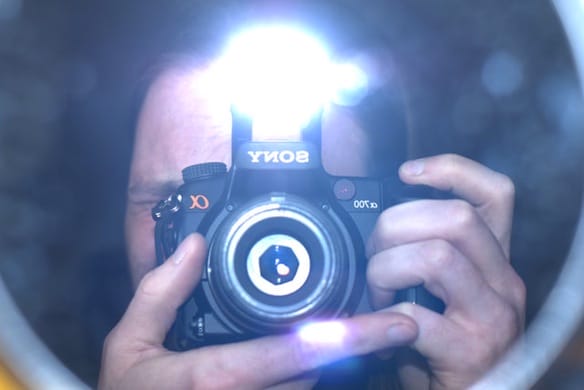
Image credit: Fuzzcraft.
A General Buying Guide for Camera Flashes
By Keith Thomson
So you’ve realized that you’re just not capturing good pictures in low light situations. You’ve tried increasing the ISO or film speed, which has diminished the color or you’ve slowed the shutter speed, giving the sensor (or film) more time to absorb light, but now all you’ve got is blurry pictures, either from the camera shake (you hands) or movement of the subjects. You realize it’s time to learn to use a flash.
Internal Flash
All “point and shoot” cameras come with a built in flash. Scroll through the menu and I’m sure you’ll find it, the universal icon for a flash is a thunderbolt. You’ll usually be given a choice of setting the flash at low, med or high output. You can use the automatic camera settings, or if you’re more advanced, you can play around with the f-stop (aperture setting) and shutter speed until you get a desired affect.
If you’ve got a more sophisticated camera, some come with a built in flash. They are limited though in that they point light in only one direction, but there is also the option of adding a more professional EXTERNAL FLASH. Depending on the features you’re looking for, an external flash can cost anywhere from about $250-$650.
External Flash
An external flash attaches to the camera via the HOT SHOE. This is located on the top of the camera, where the flash slides in and makes “contact,” you then turn the dial at the base of the flash where it meets the shoe to assure that it’s firmly attached. Your flash will still need it’s own batteries (common alkaline batteries) for the bulb to go off, but the hot shoe is what syncs it to your camera functions and shutter.
Things to consider before buying a camera flash
Before you purchase, be sure the flash unit fits the camera brand, model and hot shoe mount. All major camera manufacturers make their own flashes, but there are also off-brand flashes that are compatible with the major brands and are usually much cheaper. BEWARE, many old school, manual flashes, though they use the same batteries, have a high trigger voltage, some around 350 volts, whereas new, digital cameras won’t work with anything more than 6-12 volts. So take care NOT TO FRY YOUR NEW CAMERA.
The advantages of an external flash are tremendous. Aside from a simply a stronger light source, allowing you to focus on subjects farther away, external flashes tilt and swivel so that you can direct or “bounce” light in any direction you wish.
You can adjust your camera and flash output settings manually, but most modern, professional flashes also offer THROUGH THE LENS (TTL) metering. With TTL, the flash works with the camera’s internal metering system to determine flash output. The same it took some time to learn your camera’s functions, a flash comes with it’s own manual because it has it’s own functions.
Flash Accessories
Once you learn about your flash, you may want to take it even further with accessories. An off-camera flash chord can cost between $30-$70. This allows you (or an assistant) to hold the flash anywhere within the length of the chord.
Light diffusers are a common way to disperse and soften the light. These are often used for portraiture and can be self made (there are many online tutorials) or bought, such as those made by Gary Fong, for about $30, but be sure that a “store-bought” diffuser will fit your particular flash.
Slave System
Once you’ve become enthralled with flash photography, you may begin to consider a SLAVE SYSTEM. This means that one flash acts as a “master” and when triggered, will trigger other “slaves” to also go off, so you can put them in different locations. The LIGHT TRIGGERED systems are more affordable.
I’d suggest always choosing a flash with a built in slave. This means that the flash can be used on camera, or set off camera as a slave. If the on-camera flash is set in MASTER mode, then, as long as it’s within 80 degrees of the master’s flash, the sensor of the slave can “catch it” it and fire as well. More expensive flashes can act as either a master or a slave, but less expensive ones often are only able to act as a slave.
There are also RADIO TRIGGERED systems, which, because they are using radio waves and not light, can trigger a slave within 360 degrees. Radio triggered systems are obviously much more expensive.
Conclusion
Flash photography allows for more options because you can alter the ambient light you’d normally be shooting with. It also means that by adding and directing light, you can be more creative with the images you produce. Whether you’re a novice or a seasoned pro, the website “strobist” is excellent for information.



